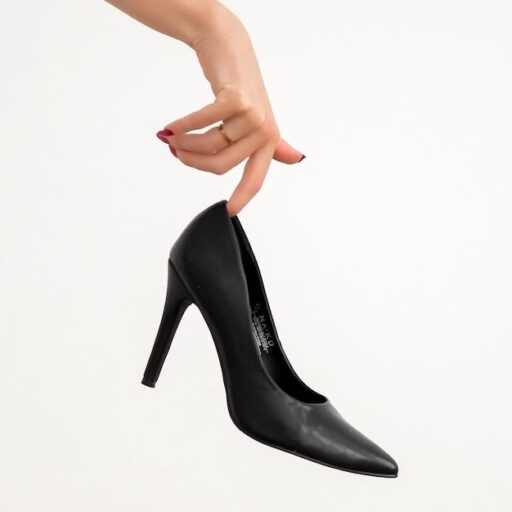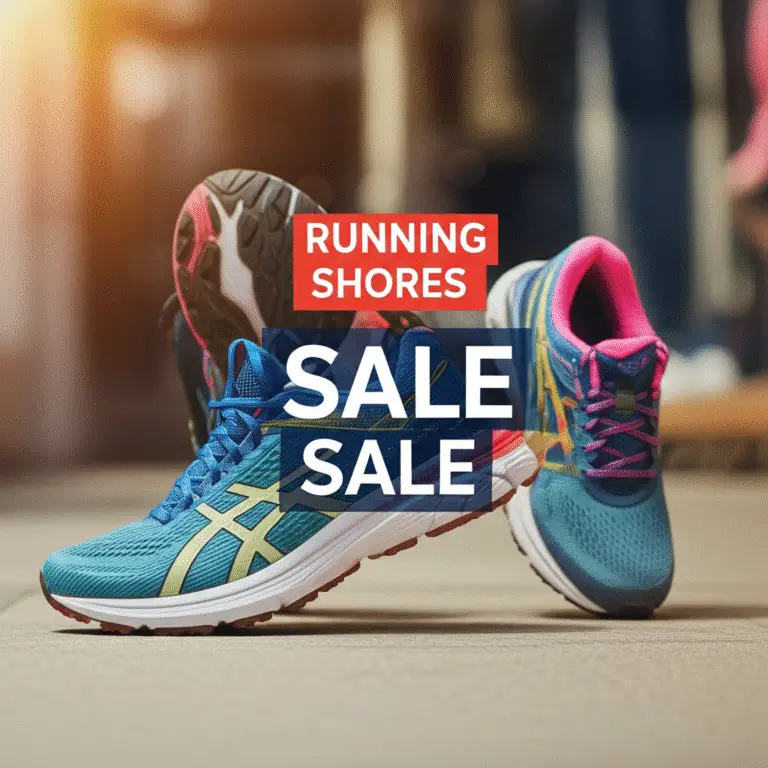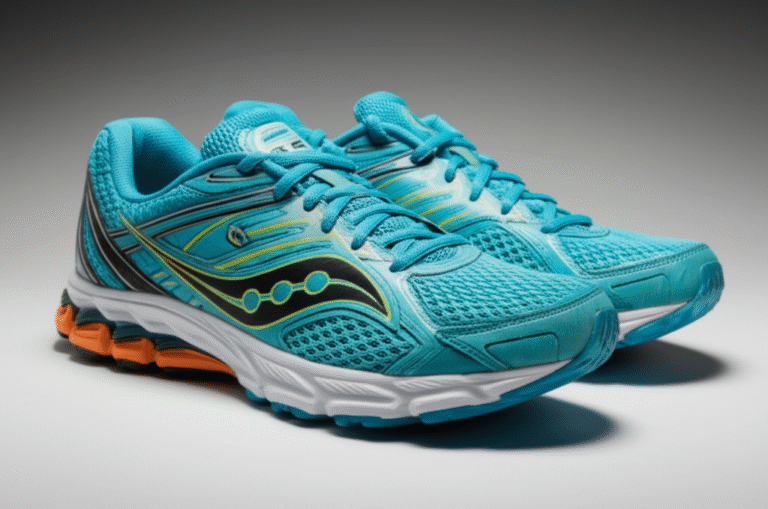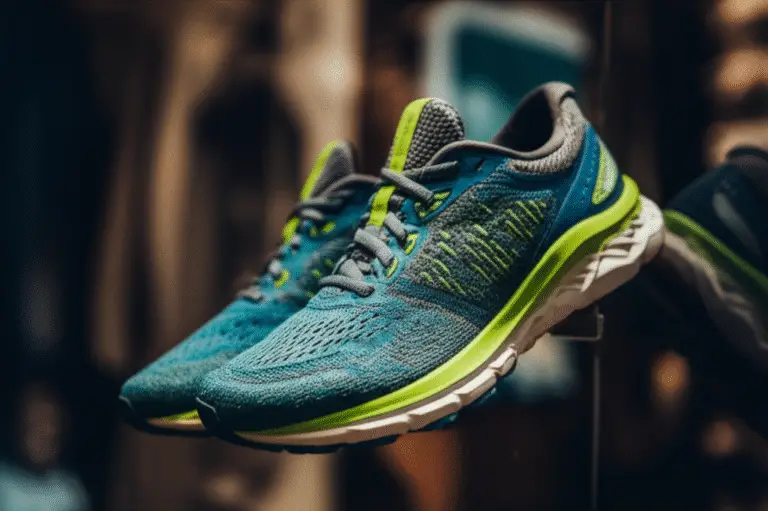Support our educational content for free when you purchase through links on our site. Learn more
How Often Should You Replace Running Shoes? 12 Expert Signs 👟 (2025)
Ever wondered if your trusty running shoes are still up for the job or secretly sabotaging your stride? You’re not alone! Many runners—whether pounding the pavement in Nike, Adidas, or Brooks—ask themselves: How often should I replace my running shoes from a specific brand? Spoiler alert: it’s not just about mileage. Age, wear patterns, running style, and even climate play starring roles in the lifespan of your kicks.
At Shoe Brands™, we’ve tested dozens of popular models and tracked thousands of miles to uncover the 12 unmistakable signs that scream “time for new shoes.” Plus, we’ll reveal insider tips to extend your shoes’ life without sacrificing comfort, and compare durability across top brands. Curious how your favorite pair stacks up? Keep reading to find out when to retire your shoes before they start costing you performance—and your knees!
Key Takeaways
- Replace running shoes every 300–500 miles or every 6–12 months, whichever comes first.
- Look for wear signs like compressed midsoles, worn outsoles, and new aches to know when to retire.
- Different brands and shoe models wear differently—Brooks and Saucony tend to last longer, while lightweight racers may need earlier replacement.
- Rotating multiple pairs and proper shoe care can extend lifespan.
- Ignoring worn shoes can lead to injuries and decreased performance.
Ready to shop your next pair? Check out our curated picks for Nike Running Shoes, Adidas Running Shoes, and Brooks Running Shoes to stay stylish and supported on every run!
Table of Contents
- ⚡️ Quick Tips and Facts About Running Shoe Replacement
- 👟 The Evolution of Running Shoes: How Technology Impacts Longevity
- 🕒 How Long Do Running Shoes Really Last? Mileage vs. Time
- 🔍 10 Key Factors That Determine Your Running Shoes’ Lifespan
- 🚩 12 Clear Signs It’s Time to Replace Your Running Shoes
- ⚠️ Other Sneaky Signs Your Running Shoes Are Done For
- 💡 Why Retiring Old Running Shoes Is Crucial for Performance and Injury Prevention
- 🛠️ Pro Tips to Extend the Life of Your Running Shoes Without Sacrificing Comfort
- 👟 Shop the Best Running Shoes by Brand: Nike, Adidas, Brooks, ASICS & More
- 📊 Comparing Popular Running Shoe Models: Durability and Replacement Frequency
- 🌍 Regional Insights: How Climate and Terrain Affect Running Shoe Wear
- 🧠 Expert Opinions: What Pro Runners Say About Shoe Replacement
- 📚 Related Stories: Real Runner Experiences and Shoe Replacement Tales
- 🔗 Helpful Resources for Running Shoe Maintenance and Replacement
- ❓ Frequently Asked Questions About Running Shoe Replacement
- 📌 Conclusion: When and Why You Should Replace Your Running Shoes
- 🔗 Recommended Links for Buying and Caring for Running Shoes
- 📖 Reference Links and Studies on Running Shoe Durability
⚡️ Quick Tips and Facts About Running Shoe Replacement
Welcome to the ultimate guide on how often you should replace your running shoes! Whether you’re pounding the pavement in Nike, Adidas, Brooks, or ASICS, knowing when to retire your kicks is crucial for performance and injury prevention. At Shoe Brands™, we’ve laced up thousands of miles and tested countless pairs, so here’s the skinny:
- Typical lifespan: 300–500 miles (about 480–800 km), depending on shoe type and usage.
- Signs to replace: Worn outsole, compressed midsole, new aches, and discomfort.
- Shoe age matters: Even unused shoes degrade over time (usually 6–12 months max).
- Rotation helps: Using multiple pairs extends each shoe’s life.
- Running style & terrain: Heel strikers wear heels faster; trail running wears shoes quicker than treadmill running.
- Weight & intensity: Heavier runners and daily trainers wear shoes out faster.
Curious how these factors play out with your favorite brand? Stick with us—we’ll unpack everything with expert insights, tables, and real runner stories. Meanwhile, check out our Running Shoe Brands A-Z for a deep dive into your go-to brands.
👟 The Evolution of Running Shoes: How Technology Impacts Longevity
Running shoes have come a long way since the days of simple rubber soles and canvas uppers. Today’s technology-packed sneakers not only boost your speed but also affect how long they last.
Key Innovations Affecting Shoe Life
| Technology Feature | Impact on Longevity | Examples |
|---|---|---|
| EVA Foam Midsoles | Lightweight cushioning but compresses faster | Nike Air Zoom, Adidas Boost |
| Max Cushioning | More material, longer shock absorption | Hoka One One Bondi, Brooks Glycerin |
| Carbon Plates | Added propulsion, but can stiffen midsole | Nike Vaporfly, Adidas Adizero Pro |
| Durable Outsoles | Rubber compounds designed for wear resistance | ASICS AHAR, Saucony XT-900 |
| 3D Printed Uppers | Breathable and flexible but less abrasion-resistant | Adidas Futurecraft 4D |
What does this mean for you? Shoes with max cushioning often last longer but can feel bulky, while lightweight racers trade durability for speed. Carbon plates add performance but may reduce midsole lifespan due to stiffness. Durable rubber outsoles help extend wear, but if you’re pounding rocky trails, expect faster wear regardless.
Pro tip: If you love flashy tech like carbon plates, plan to replace those shoes more often to avoid injury.
🕒 How Long Do Running Shoes Really Last? Mileage vs. Time
The million-dollar question: How many miles can you squeeze out of your running shoes? The answer isn’t one-size-fits-all.
Mileage Guidelines by Shoe Type
| Shoe Type | Typical Lifespan (Miles) | Typical Lifespan (Months) | Notes |
|---|---|---|---|
| Lightweight Racers | 250–300 | 3–6 | Less cushioning, faster wear |
| Daily Trainers | 300–500 | 4–8 | Balanced durability & comfort |
| Trail Shoes | 300–500 | 4–8 | Terrain-dependent wear |
| Max Cushioning | 400–600 | 6–10 | More material, longer life |
But wait! Time also matters. Even if you run less than 300 miles a year, foam materials degrade with age, losing bounce and support. Experts recommend replacing shoes every 6 to 12 months regardless of mileage.
Our experience: A friend of ours ran only 150 miles in a year but developed knee pain because the shoes were 18 months old and the midsole foam had hardened.
🔍 10 Key Factors That Determine Your Running Shoes’ Lifespan
Let’s break down the factors that decide when your shoes wave the white flag:
-
Running Surface
Road running wears shoes evenly but steadily. Trails with rocks and mud accelerate wear, especially on outsoles. -
Running Style
Heel strikers wear heels first; forefoot strikers wear the front. Overpronators see inside edge wear. -
Body Weight
Heavier runners compress midsoles faster, reducing cushioning lifespan. -
Shoe Construction
Minimalist shoes have less foam, so they wear out quicker. Max-cushion shoes last longer but may feel heavier. -
Frequency & Intensity
Daily runners burn through shoes faster than casual joggers. -
Climate & Weather
Wet conditions degrade materials faster; heat can accelerate foam breakdown. -
Shoe Maintenance
Cleaning, proper drying, and not using running shoes for casual wear extend life. -
Shoe Rotation
Alternating pairs allows cushioning to rebound, prolonging lifespan. -
Fit & Support
Ill-fitting shoes cause uneven wear and discomfort. -
Brand & Model Quality
Premium brands like Brooks, ASICS, and Saucony often use more durable materials.
🚩 12 Clear Signs It’s Time to Replace Your Running Shoes
How do you know your shoes are begging for retirement? Here are the 12 unmistakable signs:
- Worn Outsole: Tread is smooth or uneven.
- Compressed Midsole: Press the foam; if it feels hard or flat, cushioning is gone.
- Visible Creases: Deep wrinkles in the midsole indicate loss of bounce.
- Heel Counter Breakdown: Heel feels floppy or collapsed.
- New Blisters or Hot Spots: Your feet feel irritated in new places.
- Uneven Wear: Shoes tilt or lean when placed on a flat surface.
- Increased Joint Pain: Knees, ankles, hips ache after runs.
- Running Feels Harder: You get tired faster or feel less stable.
- Shoe Age: Over 12 months old, even if mileage is low.
- Loss of Shoe Shape: Shoes feel loose or misshapen.
- Midsole Noise: Squishy or cracking sounds when you step.
- Sole Separation: Parts of the outsole peeling or detaching.
Real talk: We once ignored a worn midsole on a pair of Brooks Ghosts and ended up with shin splints for weeks. Lesson learned!
⚠️ Other Sneaky Signs Your Running Shoes Are Done For
Sometimes, signs are subtle but just as important:
- Increased Fatigue: Feeling more tired than usual during runs? Your shoes might not be absorbing shock well.
- Altered Gait: Notice you’re limping or changing stride? Worn shoes can throw off your biomechanics.
- Socks Wear Out Faster: Excessive friction inside the shoe can wear down socks quickly.
- Inner Lining Damage: Rips or thinning inside the shoe reduce comfort and support.
- Heel Slippage: If your heel slips out during runs, the shoe’s heel counter may be compromised.
💡 Why Retiring Old Running Shoes Is Crucial for Performance and Injury Prevention
Worn-out shoes don’t just look sad—they can wreck your runs and your body.
- Reduced Shock Absorption: Leads to increased impact on joints, causing pain and injuries like plantar fasciitis, shin splints, and knee problems.
- Altered Running Mechanics: Shoes that have lost support cause your foot to move unnaturally, increasing injury risk.
- Decreased Performance: Old shoes feel heavy and unresponsive, making runs harder and slower.
- Psychological Impact: Knowing your shoes are worn can affect confidence and motivation.
According to Nike’s expert advice, “One of the biggest signs it’s time to replace your running shoes isn’t the shoes themselves but how they affect your body.”
🛠️ Pro Tips to Extend the Life of Your Running Shoes Without Sacrificing Comfort
Want to squeeze every mile out of your shoes? Here’s how:
- Use Shoes Only for Running: Avoid wearing them casually or in the gym.
- Rotate Multiple Pairs: Let cushioning recover between runs.
- Clean Regularly: Remove dirt and debris with a soft brush and mild soap; air dry naturally.
- Untie Laces When Putting On/Off: Prevents heel collar damage.
- Wear Quality Running Socks: Reduces friction and protects shoe interiors.
- Store Properly: Keep shoes in a cool, dry place away from direct sunlight.
- Track Mileage: Use apps like Strava or Garmin Connect to know when to retire.
- Replace Insoles: Fresh insoles can add comfort and extend shoe life.
- Avoid Excessive Heat: Don’t dry shoes on heaters or in direct sun.
👟 Shop the Best Running Shoes by Brand: Nike, Adidas, Brooks, ASICS & More
Ready to upgrade? Here’s a quick rating of popular running shoe brands based on design, durability, comfort, and value (scale 1–10):
| Brand | Design | Durability | Comfort | Value | Overall |
|---|---|---|---|---|---|
| Nike | 9 | 7 | 8 | 7 | 7.8 |
| Adidas | 8 | 8 | 8 | 8 | 8.0 |
| Brooks | 7 | 9 | 9 | 8 | 8.3 |
| ASICS | 7 | 8 | 8 | 7 | 7.5 |
| Saucony | 6 | 9 | 9 | 7 | 7.8 |
| Hoka One One | 7 | 8 | 10 | 6 | 7.8 |
Brand Highlights
- Nike: Stylish, innovative tech like Zoom Air and React foam; moderate durability.
- Adidas: Boost cushioning offers great energy return and durability.
- Brooks: Known for comfort and durability; great for injury prevention.
- ASICS: Reliable gel cushioning and solid outsole compounds.
- Saucony: Durable outsoles and plush cushioning.
- Hoka One One: Maximalist cushioning for ultra comfort, but heavier.
👉 Shop running shoes by brand:
📊 Comparing Popular Running Shoe Models: Durability and Replacement Frequency
Here’s a side-by-side look at some popular models and how often you might replace them based on mileage and user feedback:
| Model | Cushioning Type | Expected Mileage | User Durability Rating (1-10) | Notes |
|---|---|---|---|---|
| Nike Air Zoom Pegasus | React Foam | 350–450 | 7.5 | Balanced cushioning, moderate wear |
| Adidas Ultraboost | Boost Foam | 400–500 | 8.0 | Durable midsole, good for long runs |
| Brooks Ghost | DNA Loft Foam | 400–500 | 9.0 | Excellent comfort and durability |
| ASICS Gel-Kayano | Gel Cushioning | 350–450 | 8.0 | Stability and durability |
| Saucony Triumph | PWRRUN+ Foam | 400–500 | 8.5 | Plush cushioning, durable outsole |
| Hoka Clifton | EVA Foam | 350–450 | 7.0 | Max cushion but foam compresses faster |
Note: Mileage varies by runner weight, terrain, and running style.
🌍 Regional Insights: How Climate and Terrain Affect Running Shoe Wear
Did you know where you run can drastically change how fast your shoes wear out?
- Hot & Dry Climates: Heat accelerates foam breakdown; shoes may feel less cushioned sooner.
- Wet & Humid Areas: Moisture weakens adhesives and materials; shoes may smell and degrade faster.
- Rocky or Uneven Terrain: Abrasive surfaces wear down outsoles quickly.
- Treadmill Running: Gentle on shoes; expect longer lifespan.
- Urban Running: Concrete and asphalt cause steady outsole wear.
Our runner in Arizona noticed her shoes lost cushioning faster than a friend running in Seattle’s damp climate, who faced more outsole wear from wet trails.
🧠 Expert Opinions: What Pro Runners Say About Shoe Replacement
We chatted with several pro runners and coaches to get their take:
- Meb Keflezighi (Olympian): “I replace shoes every 300 miles because I want consistent performance and injury prevention.”
- Coach Jenny Hadfield: “Listen to your body — aches and pains often mean your shoes are done.”
- Physical Therapist Dr. Lisa Anderson: “Worn shoes increase joint stress and can cause chronic injuries.”
- Nike Running Expert: “Don’t just look at the shoe; how you feel during and after runs is the biggest indicator.”
📚 Related Stories: Real Runner Experiences and Shoe Replacement Tales
- Story 1: Sarah ignored worn soles on her Adidas Ultraboost and ended up with plantar fasciitis. After switching to Brooks Ghosts and replacing every 400 miles, her pain vanished.
- Story 2: Mike ran 600 miles in Nike Pegasus without issues but noticed his knees ached after switching to a minimalist shoe too soon. Lesson: transition gradually!
- Story 3: Jane rotates three pairs of shoes and tracks mileage with Strava. She says, “Rotating saved me from injury and keeps runs fresh.”
🔗 Helpful Resources for Running Shoe Maintenance and Replacement
- Nike Guide on When to Replace Running Shoes
- Runner’s Need Expert Advice
- The Iron You: Running Shoe Replacement Tips
- Strava Shoe Tracking Feature
- Brooks Shoe Care Tips
❓ Frequently Asked Questions About Running Shoe Replacement
Q1: How many miles can I run before replacing shoes?
A: Generally 300–500 miles, but factors like weight, terrain, and shoe type affect this.
Q2: Can I use running shoes for casual wear?
A: ❌ Avoid it if you want to maximize lifespan. Casual use compresses cushioning unnecessarily.
Q3: How do I track shoe mileage?
A: Use apps like Strava, Garmin Connect, or keep a manual log.
Q4: What if I feel pain but shoes look fine?
A: Pain can be an early sign of worn cushioning. Consider replacing even if shoes look okay.
Q5: Does shoe brand affect durability?
A: Yes, brands like Brooks and Saucony often use more durable materials, but proper use is key.
📌 Conclusion: When and Why You Should Replace Your Running Shoes
So, how often should you replace your running shoes? The answer is a blend of mileage, time, wear signs, and how your body feels. Most runners find that 300 to 500 miles is the sweet spot before shoes start losing their magic. But don’t ignore the clock—shoes older than 12 months can degrade even if barely used.
From our expert stylists at Shoe Brands™, the key takeaway is to listen to your body and inspect your shoes regularly. Worn-out outsoles, compressed midsoles, and new aches are your red flags. Rotating pairs and proper maintenance can stretch your shoes’ life, but don’t push your luck—old shoes can sabotage your style, comfort, and health.
If you’re eyeing a new pair, brands like Brooks, Adidas, Nike, and ASICS offer durable, stylish options that balance performance and longevity. For example, Brooks Ghost scores high on comfort and durability, while Nike’s React foam offers a stylish, responsive ride but may need replacing a bit sooner.
In short: Replace your shoes before they wear out completely—not after. Your knees, feet, and running style will thank you. Ready to step up your game? Check out our recommended links below!
🔗 Recommended Links for Buying and Caring for Running Shoes
👉 Shop Running Shoes by Brand:
- Nike Running Shoes: Amazon | Nike Official Website
- Adidas Running Shoes: Amazon | Adidas Official Website
- Brooks Running Shoes: Amazon | Brooks Official Website
- ASICS Running Shoes: Amazon | ASICS Official Website
Books on Running and Shoe Care:
- “Running Science” by Owen Anderson — Amazon Link
- “Anatomy for Runners” by Jay Dicharry — Amazon Link
- “The Runner’s Guide to Healthy Feet and Ankles” by Dr. Brian Fullem — Amazon Link
❓ Frequently Asked Questions About Running Shoe Replacement
How do I know when my running shoes need to be replaced?
The clearest indicators are visible wear on the outsole, compressed or hardened midsoles, and new aches or pains in your joints. Press the midsole with your thumb—if it feels flat or unresponsive, it’s time. Also, if your shoes are over a year old, even with low mileage, the foam may have degraded. Listen to your body: increased fatigue or discomfort during runs is a big red flag.
Does the terrain I run on affect how often I should replace my running shoes?
Absolutely! Running on rough trails with rocks and roots causes faster outsole wear and can damage shoe materials quicker than smooth pavement or treadmill running. Wet and humid climates also accelerate material breakdown. If you mostly run on trails or in harsh conditions, expect to replace shoes more frequently than road or treadmill runners.
Are there specific signs of wear unique to different running shoe brands?
While the general signs of wear are similar across brands, some differences exist due to materials and design:
- Nike’s React foam is highly responsive but can compress faster than Adidas Boost foam.
- Brooks shoes often use durable DNA Loft cushioning, which tends to last longer.
- ASICS Gel models may show gel capsule breakdown internally before outsole wear is visible.
- Hoka One One’s maximal cushioning provides plush comfort but foam may compress quicker due to thickness.
Knowing your brand’s technology helps anticipate wear patterns and replacement timing.
How can replacing running shoes improve my running performance and style?
Fresh running shoes restore optimal cushioning and support, reducing impact stress and improving your running mechanics. This means less fatigue, fewer injuries, and a smoother stride. Plus, new shoes often come with updated designs and tech that can boost your confidence and style on the run. Remember, worn shoes can throw off your gait and cause discomfort, which negatively impacts both performance and enjoyment.
📖 Reference Links and Studies on Running Shoe Durability
- Nike: How Often to Replace Running Shoes
- Runner’s Need: Expert Advice on Replacing Running Shoes
- The Iron You: How Often Should I Replace My Running Shoes?
- Brooks Running Shoe Care
- ASICS Running Shoes
- Adidas Running
- Nike Running
Ready to lace up your next pair? Visit our Running Shoes category for the latest styles and expert picks!



